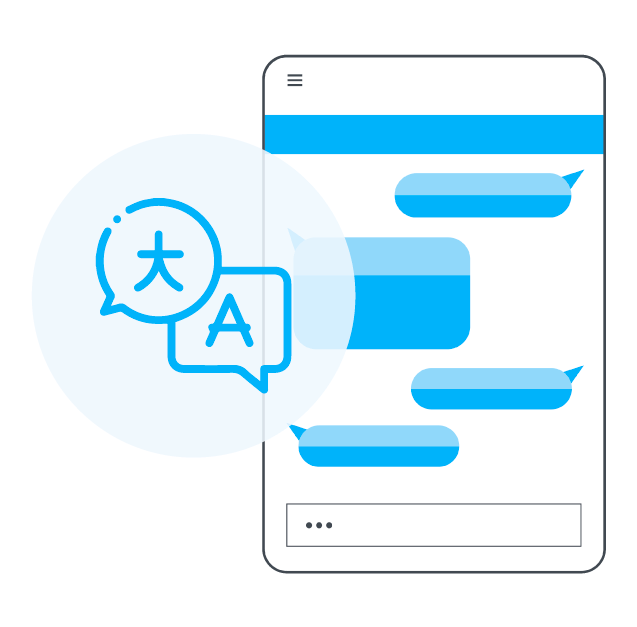Solve for inaccuracy in support conversations by measuring your agents’ comprehensibility.

“Accurate” translation is not necessarily comprehensible; therefore, it is important to develop a comprehensibility model to determine the effectiveness of your non-primary language support conversations.
If you focus on comprehensibility as the measure of interpretation quality, your non-English language customer support metrics are guaranteed to improve. To get there, you need a way to discern how well an agent and customer understand one another within the context of the conversation.
- Machine Translation: The least expensive and also least comprehensible translation tools generally focus on translating the word, not the meaning.
- Human Interpretation: Comprehensibility tends to be greater, however bilingual agents may be more costly than artificial intelligence.
- Canned Responses: A knowledge base of FAQs can help ensure responses in any language are more comprehensible, consistent, and on-brand than if you use only machine or human translation.
- Combined Approaches: Empowering agents with a knowledge base of answers to FAQs while also putting human-backed machine translation at their fingertips results in the highest comprehensibility scores.
How to Know if Machine Translations Are Enough for Your Business Model
Machine translations are fast, generally inexpensive, great for free-form text, and the engines that power machine translations get better every day. Their Natural Language Processing (NLP) engines are powered by the most advanced technology, including neural networks, which means comprehension continuously improves over time.
However, the downsides to these engines quickly become apparent once you implement them. No single engine is excellent across all language pairings. Many engines lack the enterprise-level service uptime required for proper use. These real-time translations were made for speed, not context, and as a result, may not maintain your brand and tone.
How to Use Human Interpretation to Translate Support Conversations
Hiring and retaining bilingual agents, especially if your business scales up and down at times, proves challenging for many businesses. Increased staff turnover, elevated hiring costs, and unmotivated employees can be challenging for businesses when hiring seasonal staff, particularly during peak tourism seasons and holidays. However, human interpretations enable you to maintain your brand and tone while including localization nuances such as sentiment and formality, if you hire well.
If you have tried to hire for multilingual support, you understand this is a complex, expensive, time-consuming process that delivers varying quality. Your bilingual agents also require additional training to develop the vernacular and skill set appropriate for your specific customer support experiences.
If you outsource, the problems become amplified.
Build on Your Knowledge for the Best Non-Primary Language Customer Experiences
Whatever approach you use, it is a best practice to build canned responses to your customers’ (and would-be customers’) frequently asked questions to speed up service and ensure the most on-brand responses make it to customers. This ensures agents automatically use the most comprehensible, human-translated content without having to think about it.
Look for customer support software that enables agents to leverage these types of canned responses easily and effortlessly to reduce time and friction as part of their natural workflow.
Combining Machine Learning, Human Interpretation, and Lessons Learned in Multilingual Customer Service
ChatLingual blends the best of computer-generated, human-augmented, and human-reviewed interpretations in seven layers specifically to make agents’ and content managers’ jobs easier. Therefore, it pays for us to know we can offer a 97 percent comprehensibility score consistently in 100 languages in real-time. To evaluate the comprehensibility of customer support conversations, we use independent professional translators and linguists to review conversation transcripts. We created our Agent Success Platform with this blended approach to boost customer satisfaction scores to be greater than what a bilingual agent or machine is capable of.
This may be different for your business, so consider developing your own means to measure comprehensibility in each of the languages you serve to determine if it makes sense to invest in additional tools or staff to support your non-primary language customers.
How to Measure Comprehensibility in Customer Support Contact Center Conversations
- Start with the information you do have: agent and customer feedback. Find gaps in your agents’ skills and your FAQ responses using this information.
- Build out these feedback loops in every language you serve or wish to serve.
- If you still find your company struggling with gaps in communication comprehensibility, consider hiring professional translators or linguists to review customers’ feedback and your agents’ transcripts to build on your library of responses to FAQs.
- Leverage a combination of qualitative and quantitative data — handle time, survey responses, and CSATs, for example — to paint the full picture of your non-primary language customers’ journey.
In a global economy, language must be a core consideration for any customer experience strategy, otherwise you risk losing customers and lowering your brand loyalty. Consider partnering with a trusted multilingual contact center software like ChatLingual, which combines human and machine translation, to enable you to provide exceptional service to your global clients.


